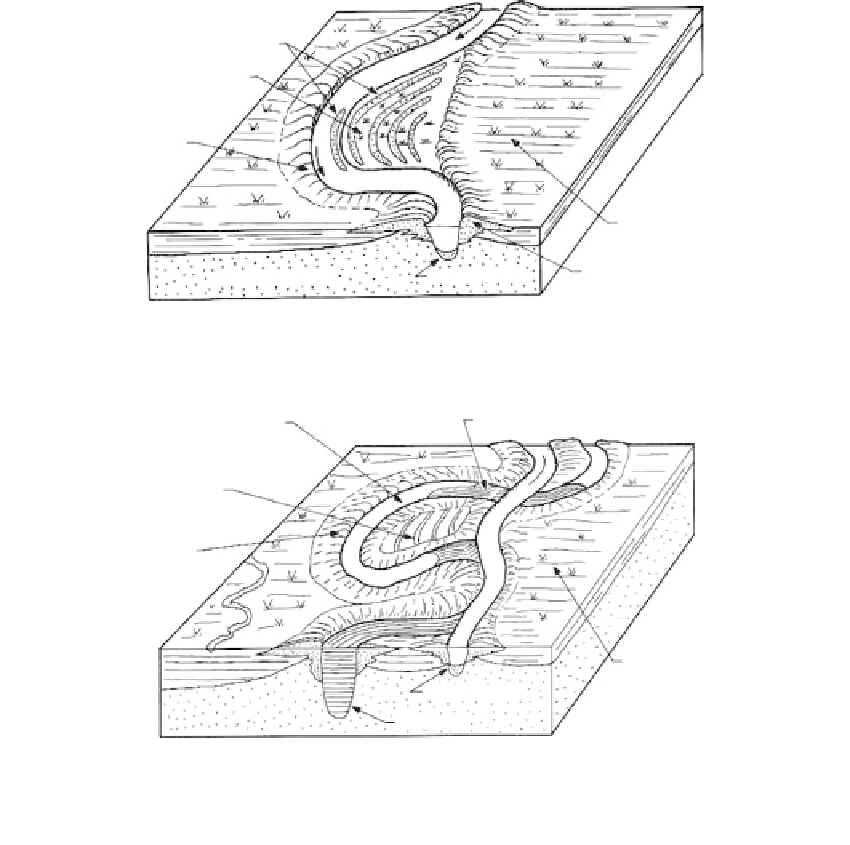Environmental Engineering Reference
In-Depth Information
Deposition of
point bars
Swales
Erosion and
natural
levee
Backswamp
deposits
Natural
levee
Log deposit
Older valley fill
FIGURE 7.25
Meander development and deposition of point bars, swales, and natural levees.
Clay plug developing
Oxbow Lake
Point bar
deposits
Natural
levee
Black
swamp
deposits
Log deposits
Clay plug
FIGURE 7.26
Meander cutoff and formation of oxbow lake followed by deposition of clay plug.
island and abandoning its former channel, which is cut off with sand fills and forms an
oxbow lake encircling the point bar deposits as shown in Figure 7.26. Since there is no
drainage out of the lake, it eventually fills with organic soils and other soft sediments
washed in during flood stages. In the Mississippi Valley, oxbow lakes are referred to as
clay plugs because of the nature of the filling, which tends to remain soft and saturated.
Lag deposits are the generally granular soils remaining in the stream channel (see
Figure 7.26).
Lateral accretion occurs during flood stages when the stream overflows its banks and
covers the valley floor with sediments. Natural levees of sandy soils build up along the
banks (Figure 7.26). In extreme floods with higher velocities, coarse-grained sandy soils
will be deposited to blanket the valley floor. Normal floods will deposit fine-grained soils
filling depressions with clays and organic soils referred to as backswamp deposits (Figure
7.26). During low-water periods these deposits are exposed to drying and become pre-
consolidated to shallow depths. The log of a test boring in a backswamp deposit near New
Orleans is given in
Figure 7.27.
It shows the weakness of the soils at depths of over 60 ft.
Figure 7.28
illustrates the complexity of soil conditions that can develop in a river valley
in the pastoral stage.


